

Short Essay on Kindness to Animals [100, 200, 400 Words] With PDF
In this lesson today, you will learn how to write short essays on the topic of Kindness to Animals. In this lesson, I am going to adapt a simplistic approach to writing these essays that all kinds of students can easily understand.
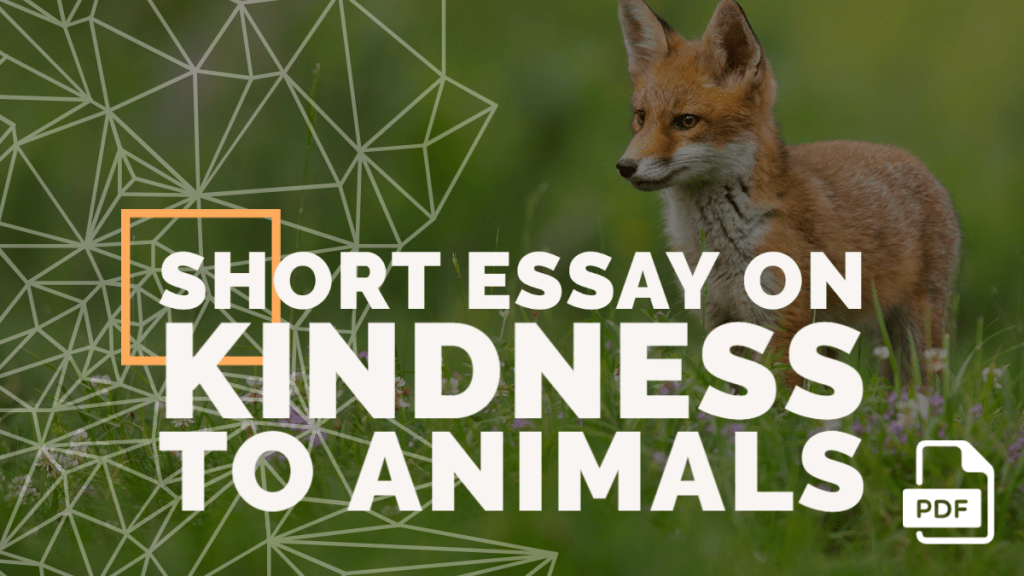
Short essay on Kindness to Animals in 100 Words
All the living creatures on this planet have the right to live freely in nature. Today, however, many animals all over the world are suffering because of human cruelty. People don’t just kill animals for their meat but also their skins, tusks, horns, teeth, feathers and fur. Many animals are kept captive, tortured and made to perform in front of crowds of people.
Innocent lab animals are used all over the world to test newly developed chemical formulations. We should be kind to animals and all living creatures. We should never harm animals. Instead, we should feed them and take care of them whenever we can. After all, having compassion for others is what truly makes us human.
Short essay on Kindness to Animals in 200 Words
For thousands of years, human beings have hunted animals not just for food, but also for sports and fun. Many animals like elephants and horned rhinoceros have been killed for centuries for their tusks and horns. Animals like lions, tigers, monkeys and even dolphins are kept captive, tortured and made to perform in front of crowds of people.
The livestock animals kept in farms for their milk and meat live in such terrible conditions, unable to move freely. And of course, we can not forget the lab animals. Rabbits, guinea pigs, rats and mice are used all over the world to test new chemical formulas developed for humans.
In our day to day life, we all have come across people throwing stones at street dogs or kicking them. Many people don’t even think twice before running their cars over street animals. We must ask ourselves if the innocent animals deserve our cruelty.
They don’t bother us and just want to live peacefully. We should become more kind and compassionate towards animals and all other living beings. We shouldn’t harm animals or let others harm them. We should feed and take care of helpless animals. After all, having compassion for others is what truly makes us human.
Short essay on Kindness to Animals in 400 Words
All living beings on this planet were created and given life by the same divine force. All of us, whether it is human beings, plants or animals, have the right to live and be free. In the olden days, most kings and emperors spent their free time going on hunts to kill animals like deer, tigers, lions and elephants. The hunted animals were not eaten but just served as a trophy for the king.
Many big animals like elephants and horned rhinoceros are still killed for their tusks, horns and skins. Marine animals like sharks and whales are also killed to be served as delicacies in several high-end restaurants. Over the years, the population of these animals has greatly decreased and many exotic species are on the verge of becoming extinct.
We don’t have to go far to see animals suffering because of human cruelty. It is not hard to notice how mistreated the street dogs are. People throw stones at them, kick them and some even run their cars over them. Many animals are kept captive and made to perform in circuses. The livestock animals kept in farms for their milk and meat live in such terrible conditions, unable to move freely.
Their babies are taken away from them and killed as the people running the farms don’t see any value in keeping them alive. Horses and bullocks kept for pulling carts and ploughs are often not fed properly and made to work until they collapse. If we take a look at the cosmetic industry, so many high-end brands test their products on innocent animals. Rabbits, guinea pigs, rats and mice are all used to test new chemical formulas developed for beauty products. This greatly harms them.
Animals have every right to live freely in nature. Just because they cannot defend themselves, does not mean that we should keep torturing them for our gain. Kindness to animals and all other living creatures is a virtue. We should not harm animals and we should stop others from harming them as well. Many animals have lost their habitat and food sources because of deforestation and infrastructure developments done by human beings.
We should feed and take care of such animals instead of viewing them as a nuisance. Governments all over the world have taken various steps to stop illegal hunting and many organisations are trying their best to make life less cruel for farm and lab animals. But they can only do so much. It is on each one of us to become more compassionate and kind towards animals so that all living beings can live freely on this planet.
If you have any doubts regarding this session, kindly let me know through some quick comments below. To read more such essays on various important topics, keep browsing our website.
You can join us on Telegram to get the latest updates on our upcoming sessions. Thank you for being with us. All the best for your exam.
More from English Compositions
- 100, 200, 400 Words Paragraph and Short Essay [With PDF]
- Write a Letter to the Editor about Cruelty Towards Animals
- Short Essay on the Beauty of Nature [100, 200, 400 Words] With PDF
- Short Essay on Save Animals [100, 200, 400 Words] With PDF
- Short Essay on Tiger [100, 200, 400 Words] With PDF
- [FREE PDF] Nelson Mandela MCQs | CBSE Class 10 English Chapter 2 [TERM 1]
- Short Essay on Our Planet Earth [100, 200, 400 words] With PDF
- 10 Lines on Elephant in English [3 Examples]
- Madhyamik English Writing Suggestion 2022 [With PDF]
- Short Essay on River Pollution [100, 200, 400 Words] With PDF
- Notice Writing Format, Type, Writing Tips, Examples [PDF]
- Short Essay on Cat [100, 200, 400 Words] With PDF
- Skip to primary navigation
- Skip to main content
- Skip to primary sidebar
Discover Your JoyScore
Love & Compassion Towards Animals and its Impact on Our Lives
July 31, 2020 by Dikshi Gupta
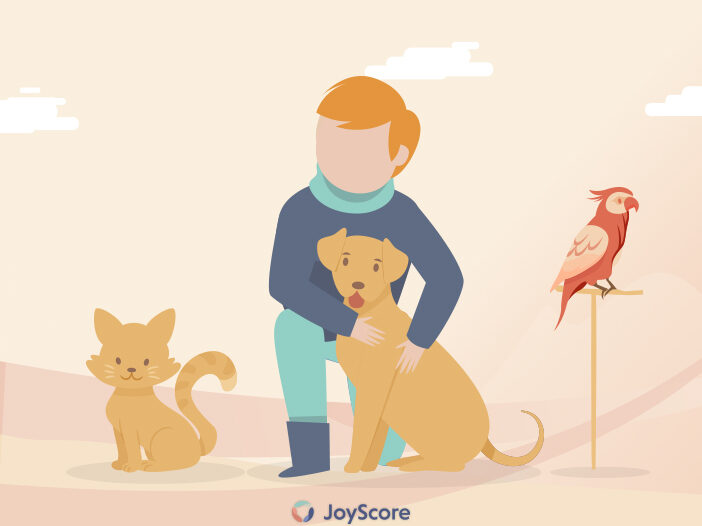
Do you own a pet? Did you ever have one? If not, do you love animals?
Do you know that Human beings are called Social Apes? The primary difference between a human being and an animal is that humans have a better sense of right and wrong; they can speak their hearts out. Have you ever experienced that feeling of kindness and love for animals? Love and bonding with an animal? It might either be with your pet or wild animals. When we talk about pets, people generally restrict themselves to dogs and cats, which is not true. People also tend to keep rabbits, birds, horses, turtles, fishes, etc. as pets.
In the past, animals were domesticated for specific use like dogs for tracking and house safety, and cats for killing rats. However, today, owning a pet is primarily because of bonding and love towards animals, as pets are considered a part of the family. Most of the pet owners would agree that their pets sleep in their room or their bed as well, in a few cases, at night; they celebrate their pet’s birthdays, or they grief their demise as it leaves an emptiness in their life and completes their pet’s last rites just like that of humans.
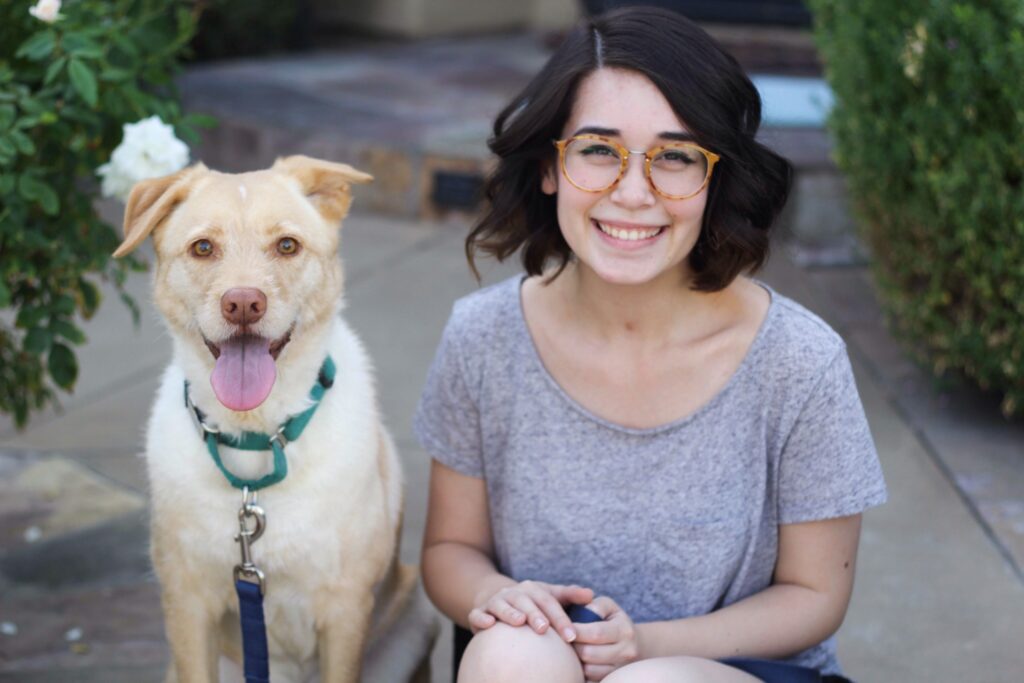
Kindness and love for animals are closely associated with the goodness of one’s character. Also, one may confidently advocate that the one who is cruel and harsh to animals cannot be a good man. Developing connection and empathy with animals is a vital part of our social development as well. One of the findings in some research is that people with pets survive longer than people with human social support alone. When we play with a pet, oxytocin, a love hormone, is released in our body and has multifold benefits. Our interactions with animals can impact physical and emotional health, and the following are some of the importance of animal compassion in human lives-
- It reduces stress.
- It diminishes your aggression and increases generosity.
- It improves mental health by reducing loneliness, depression, and anxiety.
- It increases your trust, bonding, and attachment and overall socializing skills.
- It Relaxes our autonomic system, which includes blood pressure, cortisol, and epinephrine levels.
- It minimizes the possibility of cardiovascular diseases and increases longevity by lowering our BP and cholesterol.
- It promotes empathy and compassion in people.
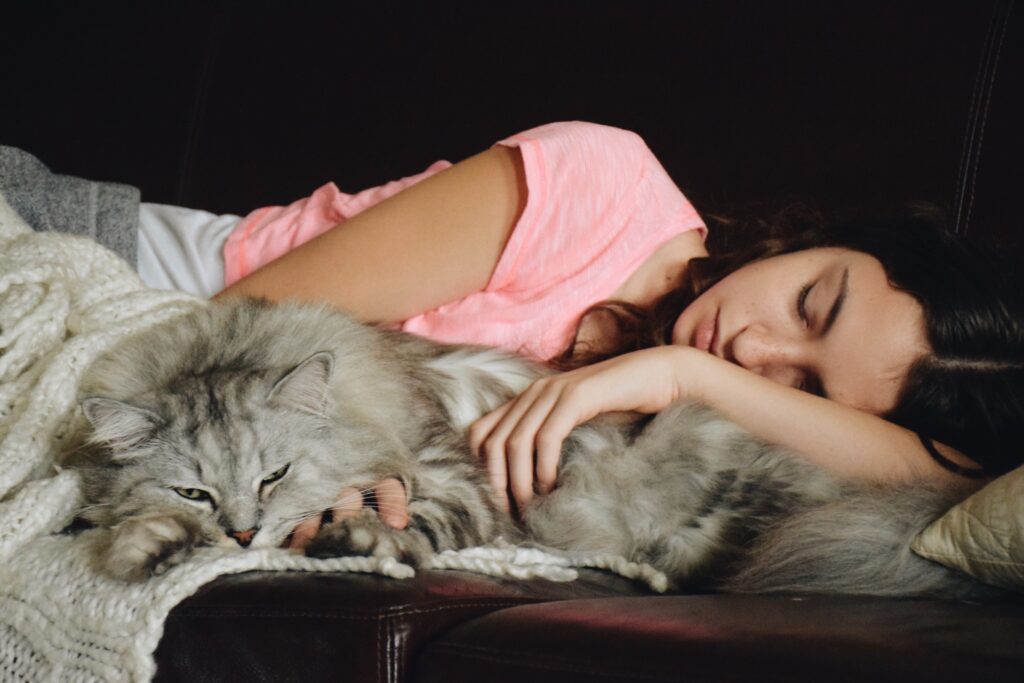
However, owning a pet makes you their master but does not give you the right to abuse them. When you love animals and are kind to them, they repay that love exponentially. However, each of them has a different way of expressing it. They tend to express their affection commonly by licking, cuddling, tail-wagging, jumping in the air, offering their paws to shake hands, leaning against, and following their master. Whatever the case is, being compassionate towards animals makes you nothing but a kinder more gentle, and giving person.
Do you know why some people love animals so much?
Have you ever wondered why sometimes we love our pets more than our relatives or next-door neighbours? Does this astonish you that how two completely different species can make each other so happy? Or ever thought why should we be compassionate towards animals? It is because people disappoint and betray, but the animals will never do. A few reasons are as below-
- Animals are a great companion. Dogs are often known as the best friend of a man. There is nothing comparable to the joy of coming home to see a companion who eagerly waits for you.

- Pets love you unconditionally and without any expectations. They do not care if you are skinny or obese, rich or poor, black or white. All they demand is your presence, your love, your voice & touch, and nothing else.
- Pets are loyal to you. In a world where humans can’t trust each other, you can blindly trust your pet as they cannot talk behind your back and never betray you.
- Animals are the most supportive audience without any argument. You can always talk to them, confide in your darkest secrets with them. They are there all the time when you need them, and they ask no questions and pass no criticisms.
- Pets bring you contentment . No matter how tiring or unpleasant a day you had, they will always be there to welcome you and make you feel pampered and relaxed.

- Animals are divine mirrors, and the more you love them, they will reflect the same. They do not understand evil or jealousy. They also do not judge you, unlike humans.
- Animals share emotions. They can laugh when you laugh, cry when you cry, and feel distressed when their master is sad.
- Animals also help lonely people to discover a sense of meaning or purpose in their lives by filling a void.
- Even when you do not treat your pets well, they still come to you and teach you forgiveness, love, empathy towards them, and other humans as they are increasingly becoming desensitized towards others.
- Pets bring you closer to Mother Earth and let you stay connected to your roots. When we watch wild animals in their territory, it reminds us to be humble about our strength and dominance.
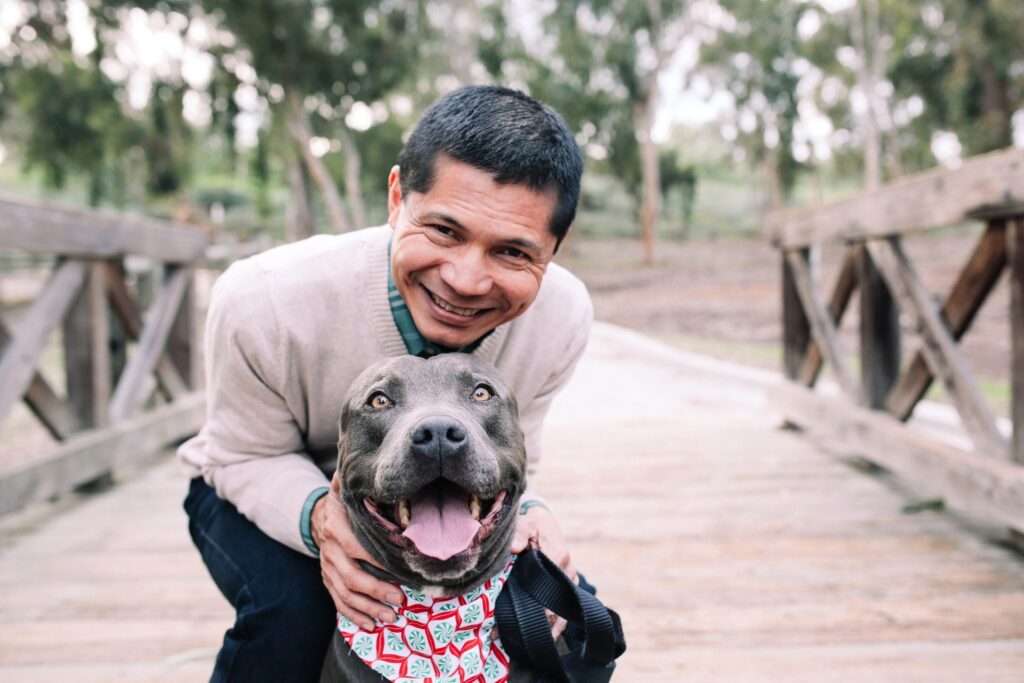
As they say, ‘A part of our soul remains unawakened until we have loved an animal.’ So, having a pet can be an incredibly fulfilling and rewarding experience. It comes with great responsibility and is a privilege too. It will take nothing away from you to be kind to an animal. Instead, it will give you all their love and affection. Loving animals will make you rich beyond measure, despite the few possessions or little money you have. However, love towards animals is not just restricted to household animals if you do not have an animal as a pet, you can show your love by feeding the hungry stray animals or helping the injured or sick animals by contacting animal welfare agencies to provide them shelter and treatment.

To conclude, I believe being compassionate towards animals will make more room for compassion among people, weaving more empathy, and fill us with respect, dignity, and love for others. Make sure the next time when you look into an animal’s eyes, you do not see an animal. You should see a living being, a friend, a soul, and a companion.
About Dikshi Gupta
Dr. Dikshi Gupta has 15 years of extensive research experience in the field of Biotechnology, Pharmacology and Nanotechnology. She has several International publications and Indian/US patents. She has made numerous scientific presentations in various national and international conferences. Dr. Dikshi Gupta, Research and Development Scientist at JoyScore Inc. She follows the saying ‘Life is short always choose happiness. Be always lively and cheerful in life.’ Over the last two years, she has been working with JoyScore team in developing an application which helps people in 3 key areas of Mind, Body, and Life. The main objective is to motivate and bring awareness of self-care and wellbeing in society.
Kindness to Animals Essay
The kindness to animals essay covers why we should always show compassion to animals. There are a few advantages to being kind to animals, and they are listed in the article. Some of these include showing respect for animals, being kind to them, and helping preserve our environment as it provides shelter to animals. Kindness to animals essay teaches us to be kind and tolerant towards furry friends.
Some people think that animals don’t have feelings or emotions, but they do. The relationship between humans and animals is much more than just giving them food and shelter. A human’s well-being depends on all living things, including animals. Humans are responsible for the treatment of domestic animals .
Kindness to animals is a common practice that many people engage in today. It is always a nice feeling to help animals in need. There are many ways that you can show kindness towards them. You can share your food with them, get a pet for yourself, or volunteer for an animal shelter.
Animals have an impact on our lives in many ways. As a society, we have focused more on human beings, which has caused a lot of harm to our planet and the animals that live on it. It is important to make decisions that help preserve wildlife to protect humans and animals.
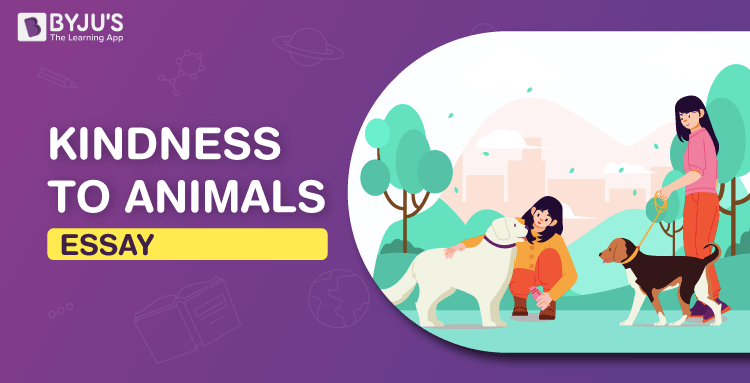
Importance of Protecting Animals
Animal activism and animal rights have been a growing trend in recent years. Animal advocates preach kindness to animals, highlighting that just as humans should be kind to each other, they should also extend that kindness to the wildlife around them. There are different types of animal activism by the people who believe in protecting animals.
There are many reasons to take care of animals and levels of kindness one can show to an animal. Some people believe that animals are a reflection of ourselves, and if we have loving animal companions, it will make us feel more fulfilled. There is also the argument that animals have the same rights as humans and that they should be protected for their welfare.
Kindness to animals essay discusses the benefits of animal-friendly practices and ideas. It also provides resources for those who want to make a difference in their own lives, whether they are working in the animal industry or not.
Many wild animals are suffering and dying because of human cruelty. The best way to help is to be kinder. We should treat all animals with care, respect, love, kindness, and dignity.
Frequently Asked Questions on Kindness to Animals Essay
Why should kids refer to byju’s kindness to animals essay.
Kids must refer to BYJU’S kindness to animals essay because it discusses the benefits of animal-friendly practices and philosophies. Animals need to be protected because they are an important part of our ecosystem. Also, when an animal becomes extinct, this could have a huge impact on the ecosystem.
Why should we protect the animals?
Animals are a precious part of our world, and we should protect them. There are many animals that have been endangered because of human activities, like the animals in Africa that have been killed by poaching. We need to protect these animals so that we can stop global warming and other environmental issues.
Leave a Comment Cancel reply
Your Mobile number and Email id will not be published. Required fields are marked *
Request OTP on Voice Call
Post My Comment
- Share Share
Register with BYJU'S & Download Free PDFs
Register with byju's & watch live videos.

Essay on Be Kind to Animals
Students are often asked to write an essay on Be Kind to Animals in their schools and colleges. And if you’re also looking for the same, we have created 100-word, 250-word, and 500-word essays on the topic.
Let’s take a look…
100 Words Essay on Be Kind to Animals
Importance of kindness.
Animals are a crucial part of our ecosystem. They deserve respect and kindness just like humans.
Ways to Show Kindness
We can show kindness by providing food, water, and shelter to animals. It’s also important to not harm them, physically or emotionally.
Benefits of Being Kind
Being kind to animals helps us develop empathy and compassion. It also helps maintain a balanced ecosystem.
Remember, every creature has a role in our world. Let’s respect and be kind to them.
Also check:
- Paragraph on Be Kind to Animals
250 Words Essay on Be Kind to Animals
Introduction.
Kindness towards animals is a virtue that is not only ethically upright, but also has profound implications on our own humanity. The way we treat animals is a reflection of our empathy and compassion, two traits that are fundamental to our coexistence.
Animals’ Role in the Ecosystem
Animals play a pivotal role in maintaining ecological balance. They contribute to biodiversity, aid in pollination, and serve as a food source for other species. Disrespecting animals can disrupt these natural processes, leading to adverse effects on the ecosystem.
The Ethical Argument
From an ethical standpoint, animals, like humans, have the right to live free from suffering. Animal cruelty is a blatant violation of this right. By being kind to animals, we uphold the principles of fairness and justice, demonstrating our recognition of their intrinsic value.
Psychological Implications
Psychological studies suggest a positive correlation between kindness to animals and empathy towards fellow humans. Those who treat animals with kindness are often more empathetic, understanding, and cooperative. Hence, promoting kindness to animals can contribute to a more compassionate society.
In conclusion, being kind to animals is not just about animal welfare; it’s about preserving our ecosystem, upholding ethical standards, and nurturing our own humanity. By fostering a culture of kindness towards animals, we can contribute to a more compassionate, empathetic, and just society.
500 Words Essay on Be Kind to Animals
Kindness towards animals is not just a virtue but a responsibility that we, as the most intelligent species on the planet, must uphold. Their inability to communicate their needs and emotions like us does not make them any less deserving of compassion, respect, and love. This essay will explore the importance of being kind to animals, the implications of our actions, and how we can foster a more compassionate society.
The Ethical Imperative of Kindness
The moral compass of a society can often be gauged by its treatment of the voiceless and vulnerable. Animals, regardless of whether they are pets, farm animals, or wild creatures, are sentient beings capable of experiencing pain and suffering. Just as we recognize the need for kindness and empathy towards our fellow humans, it is equally crucial to extend the same courtesy to animals. Our ethical imperative to be kind to animals is a reflection of our commitment to empathy, respect, and justice.
Environmental Implications
Our actions towards animals have far-reaching implications on the environment. Industrial farming practices, for instance, often prioritize productivity over animal welfare, leading to inhumane conditions and significant environmental damage. By choosing to support ethical farming practices, we can contribute to reducing the environmental footprint of our food choices. Similarly, the preservation of wildlife through conservation efforts is integral to maintaining biodiversity and ecological balance.
Psychological Benefits of Kindness to Animals
Being kind to animals can also have profound psychological benefits. Interactions with animals have been shown to reduce stress, anxiety, and depression. Pets offer companionship and unconditional love, while wildlife encounters can inspire awe and a sense of connection with nature. These experiences can foster empathy, compassion, and a greater sense of responsibility towards all living beings.
Creating a Compassionate Society
Promoting kindness to animals can have ripple effects on society. It can encourage empathy, respect for life, and a sense of responsibility towards the welfare of other beings. Schools and educational institutions can play a crucial role in this by incorporating lessons on animal welfare and ethics into their curriculum.
Moreover, legislation that protects animals from cruelty and exploitation is essential. However, laws can only work well if societal attitudes change as well. Each of us has a role to play in fostering a culture of kindness towards animals, whether it’s through our consumer choices, advocacy, or everyday interactions with animals.
In conclusion, being kind to animals is not just about treating them well. It’s about recognizing their inherent worth and right to a life free from suffering. It’s about making choices that reflect our values of compassion, respect, and justice. And most importantly, it’s about creating a society where kindness towards all sentient beings is the norm, not the exception. As Mahatma Gandhi famously said, “The greatness of a nation and its moral progress can be judged by the way its animals are treated.” May we all strive to be kind to animals and, in doing so, become better humans ourselves.
That’s it! I hope the essay helped you.
If you’re looking for more, here are essays on other interesting topics:
- Essay on Be Grateful
- Essay on Be a Good Listener
- Essay on Basketball
Apart from these, you can look at all the essays by clicking here .
Happy studying!
Leave a Reply Cancel reply
Your email address will not be published. Required fields are marked *
Save my name, email, and website in this browser for the next time I comment.

- Current Students
- Class Access
- Call Us: (844) 361-6034
Do Animals Have Feelings? Examining Empathy in Animals
Posted April 3, 2019 by UWA | Psychology and Counseling News
Important Dates
“Nonhuman animals are amazing beings. Daily we’re learning more and more about their fascinating cognitive abilities, emotional capacities and moral lives.” – Dr. Mark Bekoff
Many humans feel love and empathy towards animals, but do the animals we care about so deeply feel the same about us? How about each other? Scientific research backs the idea of emotions in animals. In fact, researchers have observed empathy in them, as well as grief, fear and other complex emotions often associated primarily with humans.
Human Emotions in Animals
Viewing animals as our emotional equals is not a new phenomenon. Pythagoras, an ancient philosopher and mathematician who lived until 490 BC, believed that animals possessed the full range of human emotions. Somewhat more recently, Charles Darwin wrote, “There is no fundamental difference between man and the higher mammals in the mental facilities.” Today, current research supports the idea that at least some animals experience a variety of emotions, including fear, joy, happiness, shame, rage, compassion, respect and more.
Dr. Marc Bekoff, professor and author of numerous essays about animal rights and conservation , stated, “Non-human animals are amazing beings. Daily we’re learning more and more about their fascinating cognitive abilities, emotional capacities and moral lives. We know that fish are conscious and sentient, rats, mice and chickens display empathy and feel not only their own pain but also that of other individuals.”
This understanding of animals as emotional beings is not something that meshes with some humans’ views. Throughout history, many people believed — and still believe — we differ from animals because of our consciousness and connection to fellow man. Those who take the behaviorist approach to studying animals argue that instead of assigning human emotions to animals, we can explain their behavior through a stimulus-response theory.
Still, evidence is mounting that animals do experience at least some degree of emotion. Through advanced technologies, we’re able to observe animals in their natural habitat. Thus, more recently, we’ve seen more animals having what appear to be emotional reactions to triggering events. Many agree these responses are not just instinctual in nature.
Now, animal researchers find themselves asking what, if any, line separates how humans perceive the world emotionally from how non-humans do. Scientists agree that emotions play a pivotal role in the well-being of humans and have likely helped us evolve overtime. It’s entirely possible that emotions have played a role in the survival of other species and affect their everyday lives greatly.
Empathy in Animals
One of the most complex and integral emotions is empathy, the ability to understand and share the feelings of those around us. Humans display empathy toward other humans and animals alike. Do animals do the same? Research points to yes.
Empathy is likely more prevalent in social species, or animals that associate in social groups. Dr. James C. Harris at Johns Hopkins University described it as “an evolutionary mechanism to maintain social cohesion.” In other words, animals that rely on a group for survival must be more sensitive to what those around them are feeling, whether they’re human or non-humans.
The idea of empathy in animals introduces a whole new way of looking at our non-human neighbors , suggesting that our feelings toward them might be reciprocated. It is also possible that they truly care about members of their own species in a way that we can relate to. This complex emotional trait has been observed in other primates, as well as dogs, mice and elephants.
Explore The Benefits Of Emotional Psychology
Interested in the field of emotional psychology? With our free guide, you’ll learn the basics of emotional psychology and how the field is changing with each passing year.
Examples of Animals Exhibiting Empathy
Observing empathy in animals is becoming more frequent due to our ability to safely observe animals in their own habitats. Here are a few examples of animals displaying empathy in what we might describe as human-like ways.
Elephants Mourn a Lost Conservationist
Lawrence Anthony was a conservationist who founded the 5,000-acre Thula Thula Reserve with African elephants. He gained a reputation for being able to comfort elephants upon their arrival at the reserve. In fact, he managed to keep elephants who wanted to leave from wandering back into harm’s way. In his book, “The Elephant Whisperer: My Life with the Herd in the African Wild,” he said he learned to communicate with the elephants by observing how they communicated with each other.
When Anthony died of a heart attack, elephants traveled to his home seemingly to pay their respects. His son said that since his father’s death , the herd has come to his house on the edge of their reserve every night.
While elephants grieving the loss of their own herd members is not a new phenomenon, the act of paying respects to a human who worked hard to help them is remarkable.
Dogs Comfort Humans in the Aftermath of Trauma
According to an article in the New York Times , Iraq veteran Benjamin Stepp returned home from two deployments with a traumatic brain injury and multiple other injuries causing pain. During a lecture at graduate school, Stepp tried hard to focus, but he was agitated. No one in the class noticed except for his service dog Arleigh, who jumped into his lap to comfort him. He believed Arleigh always empathized when he was struggling emotionally.
Comfort dogs also display empathy. When the horrific events of 2012 happened at Sandy Hook Elementary School, comfort dogs were able to help children open up and heal. Some children spoke directly to the dogs about what they’d experienced. In fact, one child spoke for the first time since the shootings after petting one of the dogs.
Arleigh and the comfort dogs provided to Sandy Hook survivors are not unique. Service dogs, as well as family pets, help veterans, kids with autism, adults suffering with mental health distress, those recovering from traumatic experiences and more. A recent study concluded that dogs feel empathy toward humans and act on that empathy, responding swiftly to humans crying.
Rats Look Out for Their Friends
Many don’t picture rats when they think of empathy, but a recent study proves that rats empathize with their friends. In the study, rats saved their friends from drowning. The experiment showed that when one rat was soaked in water, another rat quickly learned how to operate a lever that would allow the rat to escape to a dry area.
What’s more impressive about this experiment is that the rats gave up a treat that would have dropped if they didn’t pull the lever to help their fellow rat. This suggests the well-being of their friend was more valuable to them than food for themselves. If the suffering rat wasn’t present, the other rat accepted the treat.
Empathy in animals spans species and continents. Animals display empathy toward humans and other animals in a multitude of ways, including comforting, grieving and even rescuing each other from harm at their own expense.
Do Animals Have Feelings?
Award-winning environmental writer Carl Safina addressed this very question in an interview with National Geographic. He said, “Watching animals my whole life, I’ve always been struck by how similar to us they are. I’ve always been touched by their bonds and been impressed — occasionally frightened — by their emotions.” In fact, those who work closest with animals are most convinced that they do contain a wide range of emotions and feelings.
Skeptics argue that animals’ behaviors are not inherent proof that they’re experiencing complex emotions. Still, most scientists agree that animals are conscious beings that experience varying degrees of emotional responses.
While there’s still a lot of research to be done concerning animal emotions, more evidence exists than ever in history that our non-human friends are experiencing feelings much like we do. Likely, these feelings play a major role in their lives and survival.
Consider an online bachelor’s degree in psychology . If you already hold a bachelor’s degree but would like to sharpen your scholarly research skills in the areas of critical thinking, search methods, research presentation and more, you could benefit from our online master’s in experimental psychology .
At UWA, you can earn your degree entirely online at one of the state’s most affordable institutions. Our programs feature smaller class sizes and personal attention from a faculty comprised of scholars and practitioners in the world of psychology.
Home — Essay Samples — Social Issues — Animal Rights — My Passion for Animals
My Passion for Animals
- Categories: Animal Rights Animal Welfare
About this sample

Words: 588 |
Published: Mar 20, 2024
Words: 588 | Page: 1 | 3 min read

Cite this Essay
Let us write you an essay from scratch
- 450+ experts on 30 subjects ready to help
- Custom essay delivered in as few as 3 hours
Get high-quality help

Dr. Heisenberg
Verified writer
- Expert in: Social Issues Environment

+ 120 experts online
By clicking “Check Writers’ Offers”, you agree to our terms of service and privacy policy . We’ll occasionally send you promo and account related email
No need to pay just yet!
Related Essays
2 pages / 1124 words
4 pages / 1656 words
2 pages / 847 words
2 pages / 1134 words
Remember! This is just a sample.
You can get your custom paper by one of our expert writers.
121 writers online
Still can’t find what you need?
Browse our vast selection of original essay samples, each expertly formatted and styled
Related Essays on Animal Rights
Animals have been a part of human society for centuries, serving various purposes such as companionship, food, and entertainment. However, the treatment of animals has been a topic of debate for years, with some arguing that [...]
Animal rights have become a pressing topic in modern-day society due to the increased awareness of animal welfare and ethical responsibilities. The concept of animal rights involves the recognition of animals as sentient beings [...]
Animal testing has been a common practice in scientific research and testing for decades. The use of animals, however, remains a highly controversial issue. Animal Research: The Ethics of Animal Experimentation. [...]
Animal research has long been a contentious issue, with proponents touting its benefits to scientific progress and detractors decrying its ethical implications. This essay explores both sides of the debate and offers a [...]
Animals kept in zoos, aquariums, and circuses are treated poorly by humans and inevitably suffer of disease, pain, starvation, and fear so they will perform seamlessly for the public. Animals are forced by their owners to carry [...]
Zoos have been a topic of debate for many years, with some arguing that they play a crucial role in conservation efforts, while others believe that they are unethical and should be banned. This essay will explore the history of [...]
Related Topics
By clicking “Send”, you agree to our Terms of service and Privacy statement . We will occasionally send you account related emails.
Where do you want us to send this sample?
By clicking “Continue”, you agree to our terms of service and privacy policy.
Be careful. This essay is not unique
This essay was donated by a student and is likely to have been used and submitted before
Download this Sample
Free samples may contain mistakes and not unique parts
Sorry, we could not paraphrase this essay. Our professional writers can rewrite it and get you a unique paper.
Please check your inbox.
We can write you a custom essay that will follow your exact instructions and meet the deadlines. Let's fix your grades together!

Get Your Personalized Essay in 3 Hours or Less!
We use cookies to personalyze your web-site experience. By continuing we’ll assume you board with our cookie policy .
- Instructions Followed To The Letter
- Deadlines Met At Every Stage
- Unique And Plagiarism Free
On Compassion Towards Animals
The question is not, “Can they reason?” nor, “Can they talk?” but rather, “Can they suffer?” – Jeremy Bentham
Post written by Leo Babauta .
Given that I’ve written a number of times before about Compassion , I should talk about compassion towards animals.
When we talk about compassion, it’s usually towards other human beings — family, friends, neighbors, co-workers, strangers, people out there in the world, suffering. We talk about empathizing and understanding their suffering, and wanting to act to ease or end the suffering. We talk about taking action, through kindness, to end the suffering in some way.
But there are some who believe in compassion towards all living things, including me.
Many of us have pets now or have had pets in the past, and we can completely understand compassion towards animals. You wouldn’t want to hurt your beloved pet, would you? Extend that empathy, compassion and kindness to all other animals, including animals raised and killed for food, clothing, or other such uses.
Most people don’t make this connection, because food is seen as food, not a living, feeling creature who might suffer. Most of us are very removed from this suffering in modern life, as a whole series of steps have to be taken to get the meat (or other product) from the living animal to our plates: raising and slaughtering the animal is done in another part of the world, then the meat is processed, packaged, packed, shipped, chopped, cooked, served, and what have you, depending on the food.
If we could see first-hand the conditions that these animals live in, how they’re treated, what they’re fed and shot up with, we might feel differently. It’s not just the killing of an animal that causes suffering (although often it’s done in very inhumane ways), but their living conditions from birth to death.
Animals in our society are treated as non-living, non-feeling objects, and yet they aren’t. They suffer, just as we do.
“The greatness of a nation and its moral progress can be judged by the way its animals are treated.” – Gandhi
Some links for further reading:
- People for the Ethical Treatment of Animals (PETA)
- Animal Compassion Network
- Compassion in World Farming
- Teach children to be kind to animals
- How to Become a Vegetarian the Easy Way
“The animals of the world exist for their own reasons. They were not made for humans any more than black people were made for white, or women created for men.” – Alice Walker
Posted: 01.19.2009
Previous post: Exclusive Interview: Leo Talks With Tim Ferriss of 4-Hour Workweek
Next post: How to Instill the Love of Reading – In Your Child, or Yourself

Be Kind to Animals: Encouraging Compassion through Humane Education
Book Links: October/November 2002 (v.12, no.2)
by Jeanette Larson
"If you have men who will exclude any of God's creatures from the shelter of compassion and pity, you will have men who will deal likewise with their fellow men." --Saint Francis of Assisi
Studies have shown that children learn cruel and violent behavior from those around them, and that animal abuse often precedes violence toward other people. Indeed, in almost every major act of violence, from the Columbine massacre to serial killings, authorities have found animal abuse in the perpetrator's background. This common origin of violence perpetrated against animals and against people makes it imperative that we teach compassion and demonstrate concern for all living things. By the time young people exhibit cruel behavior toward animals it is often very difficult to change that behavior, making it essential that adults in every part of the community help children learn to treat animals with kindness. While not every child who is cruel to a pet grows up to be a criminal, there is a strong correlation between cruel behavior toward animals and lack of empathy for human beings.
Fortunately, there are plenty of good books that offer opportunities for kids to feel empathy toward an animal, that allow them to read about helping animals, and that provide springboards for classroom discussions about compassionate behavior. Keep in mind that most abandoned-animal books for children have a happy ending-a pet is adopted from a shelter or a wild animal is saved from danger. Supplement this with a reality check by using nonfiction books and support materials from animal welfare organizations. Organizations like the National Association for Humane and Environmental Education provide curricula, support materials, and resources that encourage humane education in a positive manner yet demonstrate the realities of animal welfare and the continual need to improve how we interact with other species. Encouraging children to care about animals does not mean that we all must become vegetarians or shun leather. Rather, it means exploring topics that are already of interest to many young people: care of companion animals, animal welfare, respect for nature, humane heroes and activists, ethical farming practices, and responsible citizenship. Creating an environment that teaches compassion and builds kinder communities means providing resources that promote these qualities. Humane education reinforces tolerance, empathy, responsibility, and compassion-for all creatures. Fortunately, storytelling and reading are excellent ways to teach this. While Phyllis Reynolds Naylor's ever-popular Shiloh may be the best-known book dealing with animal abuse, as the titles below show, many other books offer opportunities for kids to feel empathy for and care about animals.
Picture Books
Best, Cari. Goose's Story . Illus. by Holly Meade. 2002. 32p. Farrar/Melanie Kroupa, $16 (0-374-32750-5). Preschool-Gr. 2. Meade's torn-paper collages grace this story of an injured Canadian goose that eventually loses a leg. The young narrator understands that the goose is a wild animal that must learn to survive on its own, but her empathy is authentic and tender, and the goose's perseverance will win reader's hearts.
DiSalvo-Ryan, DyAnne. A Dog Like Jack . 1999. 32p. Holiday, $16.95 (0-8234-1369-1); paper, $6.95 (0-8234-1680-1). Preschool-Gr. 2. A family adopt an older dog and then must deal with their grief when he dies. In this tender story, they remember the happy times they shared and imagine moving beyond their sadness enough to welcome a new dog into their home.
Fleming, Denise. Mama Cat Has Three Kittens . 1998. 32p. Holt, paper, $6.95 (0-8050-7162-8). Preschool-Gr. 1. Using her own cats as models, Fleming creates lush, richly colored illustrations that allow readers to appreciate the sheer joy of kittens and their antics. The sparse but strong text employs repetition to excellent effect.
Frost, Jonathan. Gowanus Dogs . 1999. 48p. Farrar/Frances Foster, $15 (0-374-31058-0). Gr. 1-4. With grace and kindness that belies his own predicament, a homeless man helps the stray mother dog and her puppies that he finds under the Gowanus Canal Bridge in Brooklyn. Happily, both the man and the dogs eventually find food and shelter-and a fresh start in life. Double-page black-and-white etchings capture the often harsh city environment in fine detail.
Graham, Bob. "Let's Get a Pup!" Said Kate . 2001. 32p. Candlewick, $14.99 (0-7636-1452-1). Preschool-Gr. 2. Even though Kate and her family want a puppy, it's hard to leave an older dog behind at the animal shelter. Eventually, they decide that two dogs are better than one. Graham creates a warm and heartfelt tale that describes how animals can pull on our heartstrings.
Hill, Frances. The Bug Cemetery . Illus. by Vera Rosenberry. 2002. 32p. Holt, $16.95 (0-8050- 6370-6). Preschool-Gr. 2. The neighbor-hood kids stage funerals for bugs, which they find to be great fun. But then one boy's cat dies and they experience the sadness of true personal loss. Hill deftly handles the subject, as the kids realize that their play might not have been appropriate and that "funerals aren't any fun when they're for someone you love."
Lasky, Kathryn. She's Wearing a Dead Bird on Her Head! Illus. by David Catrow. 1995. 40p. Hyperion, paper, $5.95 (0-7868-1164-1). Preschool-Gr. 3. This is a fictionalized account of the two women who established the Massachusetts Audubon Society in 1896 in reaction to the fashion trend of hats on which stuffed birds were perched. Ink-and-watercolor illustrations depict the fashionable ladies as caricatures and poke fun at the absurdity of the fad.
McNulty, Faith. The Lady and the Spider . Illus. by Bob Marstall. 1986. 48p. HarperTrophy, paper, $5.95 (0-06-443152-5). Gr. 1-4. Even the smallest creatures need help-so when a lady finds that her garden salad has been the cozy home for a spider, she finds the spider a new home.
Meggs, Libby Phillips. G o Home! The True Story of James the Cat . 2000. 32p. Whitman, $15.95 (0-8075-2975-3). Preschool-Gr. 3. Because he is wearing a collar, everyone assumes that a stray cat has a home. But after he survives a harsh winter, a family realizes that James needs a new home and adopts him, in this story about our need to belong.
Newman, Marjorie. Mole and the Baby Bird . Illus. by Patrick Benson. 2002. 32p. Bloomsbury, $16.95 (1-58234-784-0). Preschool-Gr. 2. This tender story opens with Mole taking home an orphaned baby bird. Despite his parents' admonishments that the bird is not a pet, Mole decides to build a cage and keep it. Eventually, Mole learns that loving his bird means letting him go. Benson's expressive art perfectly portrays this endearing tale, which will strike a chord with younger readers.
Rand, Gloria. A Home for Spooky . Illus. by Ted Rand. 1998. 32p. Holt, $15.95 (0-8050-4611-9). Preschool-Gr. 3. Based on a true story, this book tells of a young girl who eventually gains the trust of a bedraggled and starving stray dog. After keeping Spooky a secret from her family for a while, Annie realizes he is getting sicker and that she must go to her parents for help. Photos of the real-life Spooky support the book's message about helping animals in need.
Rylant, Cynthia. The Cookie-Store Cat . 1999. 40p. Scholastic/Blue Sky, $15.95 (0-590-54329-6); paper, $5.95 (0-439-07331-6). Preschool-Gr. 3. A baker finds a tiny kitten near his shop; he cares for her, while customers enjoy both his cookies and the cat. This companion to Rylant's The Bookshop Dog (Scholastic, 1996) concludes with seven delicious cookie recipes.
Simont, Marc. The Stray Dog . 2001. 32p. HarperCollins, $15.95 (0-06-028933-3). Preschool-Gr. 2. A scruffy dog endears himself to a family out on a picnic, but the family members must leave him at the end of the day. In this simple tale of puppy love, they later return to the park to adopt the dog (whom they barely save from the dogcatcher), and Willy gets a name and a home. Simont's expressive illustrations ably show the range of emotions the characters experience, from joy at finding the dog, to sadness and regret for leaving him, to, ultimately, happiness when bringing him home.
Smith, Maggie. Desser the Best Ever Cat . 2001. 40p. Knopf, $14.95 (0-375-81056-0). Preschool-Gr. 3. A girl shares a wonderful life with her beloved cat, Desser. When he grows old and dies, the girl selects another kitten from the pound, knowing that while the new cat can never replace Desser, they will make new memories together.
Viorst, Judith. The Tenth Good Thing about Barney . Illus. by Erik Blegvad. 1971. 32p. Simon & Schuster/Atheneum, $15 (0-689-20688-7); Aladdin, paper, $4.99 (0-689-71203-0). Preschool-Gr. 2. During a backyard funeral, a boy remembers the good things about his cat. In this children's classic, Viorst deals honestly with the difficult issue of death, which, for many children, is first experienced upon losing a beloved pet. Also see Robie H. Harris' Goodbye, Mousie (Simon & Schuster/Margaret K. McElderry, 2001).
Cox, Judy. Third Grade Pet . Illus. by Cynthia Fisher. 1998. 80p. Holiday, $15.95 (0-8234-1379-9). Gr. 2-4. At first, Rosemary thinks Cheese, the classroom pet rat, is creepy. But she soon comes to love him and creates havoc by taking him home to protect him from the class bully, in this funny farce. Also see Cox's Cool Cat, School Cat (Holiday, 2002), about a boy who hides a stray cat at school.
Harlow, Joan Hiatt. Star in the Storm . Illus. by Wendell Minor. 2000. 160p. Simon & Schuster/Margaret K. McElderry, $16 (0-689-82905-1); Aladdin, paper, $4.99 (0-689-84621-5). Gr. 4-7. In 1912 Newfoundland, 12-year-old Maggie hides her dog, Sirius, when a new law makes it illegal to have a nonshepherding dog. Sirius proves his worth when he is able to help save the passengers of a stranded ship. Filled with authentic details about life in a remote area, this book will appeal to dog lovers and adventurers alike.
Hart, Alison. Shadow Horse . 1999. 240p. Random, paper, $4.99 (0-395-80263-0). Gr. 5-8. Thirteen-year-old Jas lives in a foster home whose owner oversees a farm for rescued animals. There, she cares for Shadow, who helps her to deal with her grief over the mysterious death of her own horse, Whirlwind. Supporters of animal rights will appreciate the frank discussion of both the positive and the negative aspects of horse shows and riding competitions, and all readers will enjoy the satisfying mystery.
Himmelman, John. The Animal Rescue Club . 1998. 48p. HarperTrophy, paper, $3.95 (0-06-444224-1). Gr. 2-3. Whenever there is an animal in need-from a possum trapped in a drainpipe to a goose that swims in circles-the kids in the Animal Rescue Club are ready to help. With the help of a wildlife rehabilitator, the club members aid animals in their neighborhood, in this I Can Read chapter book.
Kehret, Peg. Saving Lilly . 2001. 160p. Simon & Schuster/Pulse, $16 (0-671-03422-7); Aladdin, paper, $4.99 (0-671-03423-5). Gr. 3-6. After learning about the cruel treatment circus animals often receive, two sixth-grade students convince their classmates to boycott a class field trip to the circus and instead raise money to buy a mistreated elephant and send it to a sanctuary. The end may be tied up a bit too neatly, but the story is engaging and the characters are believable. A note on animal welfare and the real-life elephant sanctuary depicted concludes the book.
Mills, Claudia. Standing Up to Mr. O. 1998. 160p. Farrar, $16 (0-374-34721-2). Gr. 4-7. Twelve-year-old Maggie's refusal to dissect a worm in her seventh-grade biology class pits her love of learning and her desire to please a favorite teacher against her convictions. Mills presents a balanced argument on the issue, with all viewpoints receiving equal discussion. The book, admirably, does not offer a pat solution.
Spinelli, Jerry. Wringer . 1997. 240p. HarperCollins, $15.95 (0-06-024913-7); HarperTrophy, paper, $6.50 (0-06-440578-8). Gr. 4-7. In Palmer LaRue's rural town, 10-year-old boys are given the job of wringing the necks of birds wounded but not killed in the annual pigeon shoot. Palmer doesn't want to participate (especially after a pigeon flies through his bedroom window and "adopts" him), but he doesn't know if he has the courage to refuse the role of wringer. The juxtaposition of the tender relationship Palmer has with his pet and the macabre town festival is thought-provoking.
Woods, Shirley. Kit: The Adventures of a Raccoon . Illus. by Celia Godkin. 2000. 96p. Groundwood, $14.95 (0-88899-375-7). Gr. 2-4. This story follows the life of a young raccoon from birth into adulthood as he faces natural and human threats to his well-being. This thoroughly researched title will entertain young readers as much as it informs.
Calmenson, Stephanie. Rosie: A Visiting Dog's Story . Photos by Justin Sutcliffe. 1994. 48p. Houghton, $16 (0-395-65477-7); paper, $5.95 (0-395-92722-6). Gr. 2-6. Calmenson uses her own dog's work as a visiting dog to demonstrate how animals can make a sad person smile or help a lonely person feel connected. Excellent photographs show Rosie at a hospital, at a nursing home, and in her own home.
Dewey, Jennifer Owens. Wildlife Rescue: The Work of Dr. Kathleen Ramsay . Photos by Don MacCarter. 1994. 64p. Boyds Mills, paper, $9.95 (1-56397-762-1). Gr. 3-6. Dewey describes the daily rescue work at a New Mexico wildlife clinic where injured birds, bears, and other animals are helped before being returned to their natural environments. The dedicated Dr. Ramsay is an excellent role model for students interested in wildlife conservation.
Goodall, Jane. The Chimpanzees I Love: Saving Their World and Ours . 2001. 80p. Scholastic, $17.95 (0-439-21310-X). Gr. 4-7. The most famous advocate for chimpanzees and other primates documents their emotions, family relationships, and other "human" qualities and explains the dangers they face. Attractive color photographs and extensive back matter comprising additional factual information, maps, and information about Goodall's organization Roots and Shoots (whose local chapters sponsor student environmental preservation activities) round out the title.
Goodman, Susan E. Animal Rescue: The Best Job There Is . 2000. 48p. Simon & Schuster, $15 (0-689-81794-0); Aladdin, paper, $3.99 (0-689-81795-9). Gr. 2-4. John Walsh, a member of the World Society for the Protection of Animals, loves his job! Three of his efforts-helping animals rescued from a flood, an earthquake-damaged building, and a war-torn zoo-offer a look at the variety of ways to help animals.
Jackson, Donna M. The Wildlife Detectives: How Forensic Scientists Fight Crimes against Nature . Photos by Wendy Shattil and Bob Rozinski. 2000. 48p. Houghton, $16 (0-395-86976-5); paper, $4.95 (0-618-19683-8). Gr. 3-7. Special scientists track down those who commit crimes against wild animals, including poaching, killing elephants for ivory, and stealing sea turtles for soup, in this engaging title. Color photographs clarify the text, which reads much like a mystery novel. Another title from the Scientists in the Field series, Project UltraSwan by Elinor Osborn (Houghton, 2002), follows scientists who are trying to help trumpeter swans relearn migration routes in the eastern U.S.
Johnston, Tony. It's about Dogs . Illus. by Ted Rand. 2000. 48p. Harcourt, $16 (0-15-202022-5). Preschool-Gr. 3. Short poems and bright illustrations provide insight into an amazing assortment of canine companions. From silly wordplay ("My dog's name is Mutterly. / He makes my heart melt, butterly. / I love the mongrel utterly.") to sly cultural allusions ("Who knows what pilfered prizes / lurk / in the yards of men? / Shadow knows."), this collection will have broad appeal.
Lasky, Kathryn. Interrupted Journey: Saving Endangered Sea Turtles . Photos by Christopher G. Knight. 2001. 48p. Candlewick, $16.99 (0-7636-0635-9). Gr. 3-6. After one Kemp's ridley turtle's voyage to the Sargasso Sea goes awry, dedicated volunteers ensure it remains protected until it can resume its journey. Dazzling photographs show these awe-inspiring creatures in their beautiful ocean environment.
Leedy, Loreen. Measuring Penny . 1998. 32p. Holt, paper, $6.95 (0-8050-6572-5). Gr. 1-3. Lisa learns about mathematical measurements and dog care when she uses standard and nonstandard units of measure to calculate information about her dog, Penny, and other canine friends. Leedy uses an innovative technique to help explain the concept of measurement-something that kids often find difficult to master.
Murphy, Stuart J. Pepper's Journal: A Kitten's First Year . Illus. by Marsha Winbom. 2000. 40p. HarperCollins, $15.95 (0-06-027618-5); HarperTrophy, paper, $4.95 (0-06-446723-6). Gr. 1-4. In this book in the MathStart series, Murphy uses events in the first year of a kitten's life to introduce calendar concepts. Readers learn about both time and how we measure it, while learning facts about cats and caring for them.
Swinburne, Stephen R. In Good Hands: Behind the Scenes at a Center for Orphaned and Injured Birds . 1998. 32p. Sierra Club, $16.95 (0-87156-397-5). Gr. 3-6. A 16-year-old volunteer helps to rehabilitate birds at the Vermont Raptor Center, where orphaned or injured birds of prey are cared for. Solid information on rescuing these birds accompanies a poignant story of volunteerism.
Swinburne, Stephen. R. Once a Wolf: How Wildlife Biologists Fought to Bring Back the Gray Wolf . Photos by Jim Brandenburg. 1999. 48p. Houghton, $16 (0-395-89827-7); paper, $5.95 (0-618-11120-4). Gr. 5-8. Swinburne chronicles 25 years of work by dedicated people to reintroduce the gray wolf to Yellowstone Park and other areas of North America, a controversial issue in the field of wildlife conservation. The gray wolf has long been seen by ranchers as a threat; the book's protagonists attempt to show the gray wolf's value as a part of nature.
- Hold a Plush Pets Animal Parade for favorite stuffed animals. Give prizes for longest tail, cutest nose, fluffiest, and other fun categories.
- Research your state and city laws regarding cruelty to animals. If laws don't protect animals, children can write to local leaders to ask that animal welfare laws be passed or strengthened. Ask a speaker from a local animal welfare organization to talk to kids about what to do if they witness animal cruelty.
- Contact a local animal shelter and ask for its wish list of desired items. Have students create posters and fliers to solicit donations; maintain collection bins; sort the items; and deliver them to the shelter.
- Ask the school cafeteria to include healthy vegetarian alternatives in the lunch menu on a regular basis.
- Celebrate events that focus attention on the needs of animals. These can include Spay Day USA in February, Animal Cruelty Prevention Month in April, Be Kind to Animals Week in May, Adopt a Cat Month in June, or the Blessing of the Animals in honor of St. Francis of Assisi's Feast Day in October. Check with local shelters and humane organizations for specific dates and activities.
Web Connections
The National Association for Humane and Environmental Education (NAHEE) publishes KIND (Kids in Nature's Defense) News . Subscriptions are available online at http://www.nahee.org and include a teacher guide with calendars, lesson plans, and reproducible materials. Other information includes lists of books, movie reviews, research, and other resources.
The American Society for the Prevention of Cruelty to Animals (ASPCA) Web site at http://www.aspca.org offers tools for teaching humane awareness, including teacher tips, activities, information on animal welfare laws, and more. The children's bibliography section features a searchable database of excellent animal-related literature for kids, as well as information about the Henry Bergh Award, an award named for the organization's founder that honors books "that promote the humane ethic of compassion and respect for all living things."
The Be Kind to Animals (BKA) Contest is an annual event sponsored by the American Humane Association (AHA) to honor young people who make a difference in the lives of animals. Nominees are divided into two age groups (6-9 and 10-13). Winners of the BKA Contest are announced during Be Kind to Animals Week in May. Grand-prize winner receive a $5,000 college scholarship. Contact the AHA at 63 Inverness Dr. East, Englewood, CO 80112-5117; 800-227-4645; or visit its Web site at http://www.americanhumane.org .
Jeanette Larson is the youth services manager for the Austin Public Library in Austin, Texas. A vegetarian for more than 15 years, she shares her home with several rescued dogs and cats.
Share This Page
- OneKind Planet Home
OneKindPlanet
Animal facts, education & inspiration
Street animals need compassion too
01/12/1974 by Jane Warley

As a society, we often lack compassion for street animals, such as stray dogs and cats. As a result, they suffer neglect and cruelty instead of love and care. Yet, they are living beings just like us. They deserve our kindness and respect, and we are responsible for ensuring that they receive the care and attention they need.
One way to encourage compassion towards street animals is to lead by example and demonstrate kindness towards animals in our own lives. For example, we can feed a stray cat or dog, adopt a street animal as a pet , or simply show them some love and affection. We can also spread awareness by sharing social media articles and information about their plight.
Tips for raising awareness about strays
Showing compassion towards animals, especially homeless ones, not only improves their lives but also helps humans to be more compassionate towards others in the community and bolsters our self-esteem and self-worth.
Adopt, don’t shop
Shelters keep stray animals until someone adopts them. If fewer people opt to adopt, the animals stay for longer, living without the love and comfort that a real home affords. They also occupy space, potentially preventing other strays from getting the attention they need.
As responsible community members, it’s good to encourage others to adopt rather than shop for companion animals. Not only can this help change the life of the animals, but it creates space for shelters to help more strays.
Rescue centres often need volunteers, either to help look after the animals in their care or to raise awareness about the shelter and the issues affecting stray animals today.
It can be an extremely rewarding experience, and you can fit it around you, offering a few hours each week or more, whatever you can manage. You don’t need any special skills, but if you can build things, such as kennels, or work on printing fliers, that would greatly help the staff.
Caring for stray animals is an expensive business. Animals often need medical attention when they arrive in shelters, with many involving hospitalisation and supportive care, so costs add up quickly.
Shelters often rely on donations to fund their efforts to provide this medical care and shelter, food and toys for their animals. Donating is a great way to make a difference in their lives.
Before you donate, it is a good idea to research and choose an organisation that aligns with your values and is known for using donations effectively.
Sometimes shelters can get crowded, and fostering can help the animal and relieve pressure on the shelter.
Foster homes provide rescue animals with a temporary home where they can benefit from love, affection, training, and medical care. They may also have behavioural issues or anxieties to work through due to their time on the streets.
Advocate for animal right s
Finally, it is important to advocate for animal rights and welfare and support policies that protect the welfare of street animals. This may involve signing petitions, writing to your local politicians, or supporting organisations working to improve street animals’ lives.
Having general empathy and compassion towards homeless animals is the minimum we humans can do for them. By educating others, setting a good example, volunteering, and advocating for animal rights, we can help to spread awareness about the issues and make a difference in the lives of street animals.
Blog by Nicole McCray.
Filed Under: Blog
By continuing to use the site, you agree to the use of cookies. More information Accept
The cookie settings on this website are set to "allow cookies" to give you the best browsing experience possible. If you continue to use this website without changing your cookie settings or you click "Accept" below then you are consenting to this. For further information visit www.aboutcookies.org or www.allaboutcookies.org. You can set your browser not to accept cookies and the above websites tell you how to remove cookies from your browser. Some of our website features may not function as a result.
6 Ways to Show Kindness to Animals
One of the easiest ways to teach children about kindness and empathy is to start by helping them learn about treating animals well. In Jewish teaching, compassion, one of the highest virtues, is extended to animals as well as to humans. Tz'ar ba'alei chayim or kindness to animals , is a mitzvah that can easily engage young children and the whole family. The simple activities nurture compassion towards animals while providing opportunities for family fun and togetherness.
Care for pets
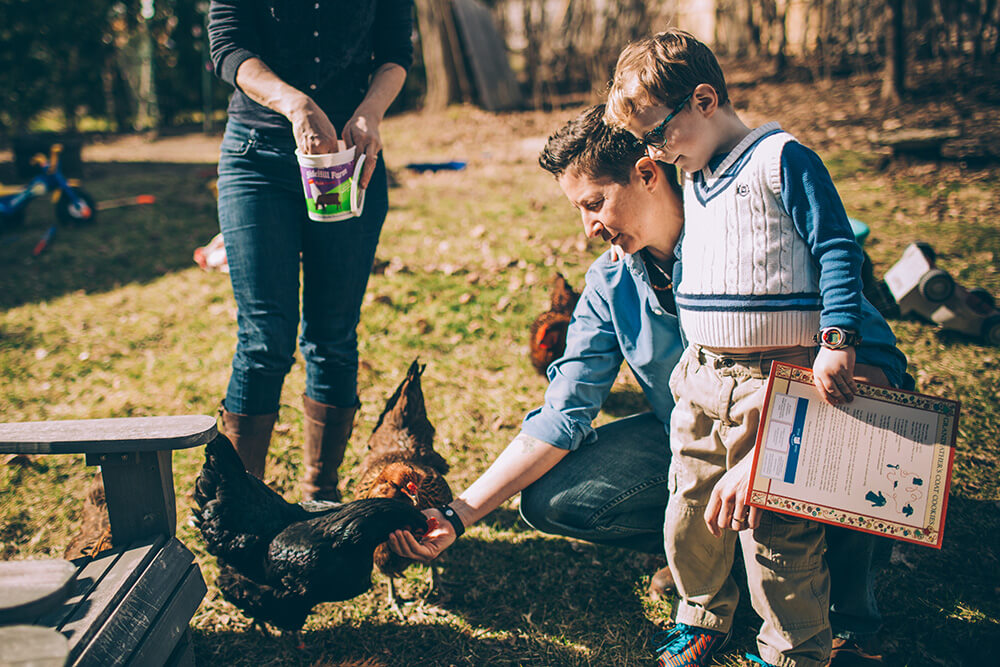
Whether you have a dog, cat, iguana, fish, backyard chickens, or all of the above, the bond that children form with a pet establishes a respect for animals early on. Teaching children about being gentle when they handle their pet, and talking to them about their responsibility in caring for the pet, is an easy way to teach kindness to animals. Did you know that caring for a pet at home can help children develop a greater sense of empathy while learning about responsibility? For more information, see this post from Ripple Kindness.
Help the environment
Photo via wikiHow
Little acts to help the environment benefit animals too. When you cut six pack beverage holders up, properly store and sort recycling and trash, you help protect wild and stray animals. Using environmentally friendly soaps and cleaners also helps protect our oceans.
Visit a sanctuary or rescue
Photo via PJ Library in Winnipeg
Take your family to visit an animal sanctuary or volunteer at a shelter. If there are not opportunities for either available, you can also collect donations for your local animal rescue , run or walk a 5k for animals, or sponsor a shelter worker or pet. For a really great volunteering idea, watch the video below - children read to shelter dogs to help the animals get over stress and anxiety. The Mother Nature Network also has a list of 25 creative ways that you can help your local animal rescue.
Plant a butterfly garden
Make your yard or garden friendly to animals by planting a butterfly garden or indigenous varieties of plants friendly to local bees and wildlife. Not only is this activity fun, hands-on, and sensory, but you'll be creating a space for your family to observe and interact with animals right in your own backyard. To help get started with your garden, check out this shopping list of butterfly and hummingbird friendly plants by the New Jersey Audobon Society.
Leave wild animals in their own homes
Children have a natural curiosity about the world around them and the animals that inhabit it. While your child may want to capture hermit crabs at the beach or bring a snail home, the best place for these creatures is in their own natural habitat. At the beach, model this respect by helping stranded starfish make it back to the ocean, and leaving clams and crabs where you find them. During the summer, if children want to capture fireflies in the evening, be sure to set the bugs free after a few moments to ensure they survive.
Use your child’s curiosity as a teaching opportunity to talk about respecting nature. Take the opportunity to practice observational skills and looking with "eyes and not hands."
Read a story or watch a movie about caring for animals
Stories about animal-human relationships or with animals as central characters create natural connections between children and animals. If you do screen time, picking movies or TV shows with animals as the main characters provide great opportunities to discuss kindess with children. If you're looking for a story to read with your children, try Baxter the Pig Who Wanted to be Kosher , Ketzel, the Cat who Composed , A Hen for Izzy Pippik , or How to Heal a Broken Wing .
Do you have a favorite book about animals? Share your favorites with us on Facebook .
August 15, 2016

- Frequently Asked Questions
- Helpful Free Resources
- Happiness & Fun
- Healthy Habits
- Love & Relationships
- Mental Health
- Mindfulness & Peace
- Purpose & Passion
- Fun & Inspiring
- Submit a Post
- Books & Things
- Tiny Buddha’s Breaking Barriers to Self-Care

“Compassion and happiness are not a sign of weakness but a sign of strength.” ~Dalai Lama
Showing compassion is one of the best ways to make the world a better place.
It isn’t always easy to have compassion for people, if they’ve hurt you, don’t see things the way you do, or seem to cause many of their own problems. It’s also easy to forget about certain people—people who live on the street, people who don’t have the voice to speak out, and sometimes even ourselves.
I freely admit that my compassion levels plummet in some of those cases, and I end up feeling tremendous guilt when I realize what a beast I’ve been. It’s something I work at.
I think most of us could also put a little more thought into showing compassion for animals and the world around us. They are just as worthy, and the act just as important and rewarding.
Compassion is like a muscle; the more you work it, the stronger it becomes. Here are a few ways simple ways to work that muscle and make the world a better place:
1. Remember that everyone’s litter is our litter.
It’s so easy to walk past an empty packet of whatever discarded on the floor and pretend it’s not there, consciously or unconsciously.
Everyone must be acutely aware of our rapidly changing environment. We can see it all around us as we become increasingly urbanized. We see it, or rather don’t, as blue skies are replaced with a thick haze of pollution.
The simple act of picking up that bit of trash and depositing it in the nearest bin is an enormous act of compassion for our planet. Keeping it free from pollutants (that can harm or kill wildlife) is a small and loving step that benefits the world around you.
It’s also compassionate to others and ourselves since millions of tax dollars are spent picking up litter each year.
To learn more, visit Keep America Beautiful : Litter Prevention, Waste Reduction, Beautification
2. Help the strays.
Stray animals aren’t any less living beings just because they don’t have a home, the same way people living on the streets aren’t any less human because they too are homeless.
It’s always best to contact local animal welfare agencies if you do see a wandering stray. Odds are, someone lost their pet and is starting to worry. If it is a stray it may be scared, sick, or injured, meaning it needs your help.
Resist the urge to shoo it away and go about your day. They might be feeling lonely or are just really pleased to see you.
I’ve always felt that ignoring the random cat that wanders up to you meowing away is like ignoring a person who greets you with open arms. They don’t care if you haven’t shaved or are still in your slippers. It’s great to see you.
Just remember to approach cautiously so you don’t scare the animal or put yourself in danger.
To learn more, visit The Humane Society of the United States : What to Do If You Find a Stray Pet
3. Give the Earth a drink.
You should keep houseplants and gardens sufficiently hydrated anyway, but I understand what it’s like to look out at your thirsty garden and think “I’ll sort it out tomorrow.” It’s funny how tomorrow ends up turning into next week.
Plants, like us, are living things that depend on water to survive. Imagine if you were feeling a bit on the dry side, wilting slightly, and you were denied a cool glass of water until a few days later. You’d probably be crawling on the ceiling by then.
Sure, plants have the benefit of rain, but not all of the time. During the summer, they need us to put aside the “I’ll do it later” thoughts and act out of the sheer understanding that they really do need a good soak.
To learn more, visit TLC, How Stuff Works : How to Water Plants/Water Conservation
4. Don’t squish the spider!
Admittedly, some spiders can be dangerous to us—if in doubt, call animal welfare and keep your distance—but most of the time we get scared simply because of how they look.
Spiders are beautiful and amazing creatures. Even if like me, you’re arachnophobic, I implore you to swallow some of that fear and learn about them.
They’re as diverse and skilled and creative as we are; they have families they provide for and they play just as an important role in our ecosystem as every other creepy-crawlers in this world. In fact, they control the insect population. (If you don’t love flies, killing spiders is highly counterproductive.)
If you come across a spider, allow this thought to run through your mind before you dispatch it: how would you feel if a giant foot/newspaper/swatter/etc. came crashing down on you?
We’re much larger than spiders are, so we don’t really have all that much to worry about. No matter how scary they look.
To learn more, visit The Xerces Society : for invertebrate conservation.
5. Drive with care.
Our world is crisscrossed with roads cutting through areas of land that were once barely populated by people. Connectivity is important, but it’s also crucial to remember that many of the highways constitute what used to be animals’ homes and territory.
Keep your eyes open for warning signs about animals crossing. These signs indicate a very real possibility. It’s vital for your safety as much as, say, a deer’s to slow down. If you hit a large animal at speed or lose control of the vehicle, neither of you will fare very well.
Even clipping an animal with the car can cause it severe damage and suffering. If you do hit an animal, try to stop in a safe place and call animal welfare, the same way that you’d call an ambulance if you hit a person.
It’s not just large mammals that are at risk either; smaller mammals like foxes, rabbits and badgers, birds and domesticated animals too, are all exposed to the possibility of being seriously injured or killed on the roads.
When you’re next stuck in a traffic jam, look out onto the gutters of the roadside and see how many dead birds and mammals you can spot. They were trying to get from A to B too, just like us. (They may even have been attracted to the road by litter, bringing us back to where we started.)
To learn more, visit Vegan Reader : 5 Tips to Prevent Road Kill
We can easily adapt the image of the Buddhist monk sweeping his path as he goes to our own busy lives. All it requires is a bit of extra attention to our environment.
If you’re as passionate as I am about the natural world, you could support a local charity through donations and/or volunteering. You could even take the plunge and go vegetarian. (It’s not that scary, honest.)
Compassion and its benefits extend beyond consideration of human life. It’s one of our most defining qualities as human beings, and we have countless opportunities to express it to the world around us.
Photos here and here , CC 2.0 .
About Sam Russell
Sam Russell is a young writer from the southeastern corner of the UK. He’s a cynic by nature trying to prove that cynics can be happy and positive, too. Visit his blog at http://cackhanded.wordpress.com/ .
Did you enjoy this post? Please share the wisdom :)
Related posts:

Free Download: Buddha Desktop Wallpaper

Recent Forum Topics
- What do I do now?
- I’m not sure if I made the right choice
- My moms cancer diagnosis
- self anger and regret
- Feeling low and can’t control my mind
- Heartbreak sucks
- Family tragedy Donation-Charlotte Arp
- Anxiety and Obsession Struggles
- Surrender, Accessing Shakti by clearing samskaras, eliminating false selves
- Body Positivity & Gratitude
Fun & Inspiring
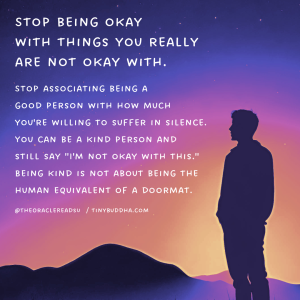
Stop Being Okay with Things You Really Are Not Okay With
GET MORE FUN & INSPIRING IMAGES & VIDEOS .
Latest Posts

8 Ways Life Improves When You Value and Prioritize Yourself

Guidance for Growth: How to Forgive and Live Without Regrets

How to Comfort the Grieving Without Saying “Sorry for Your Loss”

What Forgiveness Really Means and Why It’s the Ultimate Freedom

5 Hidden Fears That May Be Secretly Sabotaging Your Life
This site is not intended to provide and does not constitute medical, legal, or other professional advice. The content on Tiny Buddha is designed to support, not replace, medical or psychiatric treatment. Please seek professional care if you believe you may have a condition.
Tiny Buddha, LLC may earn affiliate income from qualifying purchases, including from the Amazon Associate Program.
Before using the site, please read our Privacy Policy and Terms of Use .
Click to opt-out of Google Analytics tracking.
Who Runs Tiny Buddha?

Get More Tiny Buddha
- Youtube
- RSS Feed
Credits & Copyright
- Back to Top
Essay on “Kindness to Animals” for Kids and Students, English, Paragraph, Speech for Class 8, 9, 10, 12, College and Competitive Exams.
Kindness to Animals
Like human beings animals are also the creatures of God. Animals are equal sharers of natural gifts with men. But it is a pity that men treat animals cruelly. They kill animals to eat their meat. They kill certain other animals to conduct medical experiments. They use animals like donkeys, horses and oxen some animals as beast of burden. They put some animals and birds in a cage for the sake of fun. These animals and birds are doomed to lead a solitary life.
People should know that animals are also living beings. They feel like human beings. The same life runs through them all. Life is as dear to as to human beings. They also love to move and live freely. They as human beings do when they are tortured. They too have physical needs which they want to satisfy. Men should be thankful to them for what they do for them.
People should show kindness to animals just as they do to their pets. They take a lot of care of their dogs, cows and cats. They give them bath and feed them at regular intervals. They clean their place of living. They try to give them comfort. Whenever the pets fall ill, they take them to veterinary hospital. People should give the same type of treatment to other animals also. They should stop eating meat. They should not hunt them for fun and enjoyment.
Some people express the view that if animals are not killed, they will attack human beings. But such people are not right in holding this view. All animals are not dangerous. Nor do all animals kill human beings. Life will become impossible without animals. They must be protected at all costs. Special forests should be made to protect animals. Birds should be kept in sanctuaries for security and safety. Hunting and killing of animals should be prohibited.
Related Posts

Absolute-Study
Hindi Essay, English Essay, Punjabi Essay, Biography, General Knowledge, Ielts Essay, Social Issues Essay, Letter Writing in Hindi, English and Punjabi, Moral Stories in Hindi, English and Punjabi.
Why did you use the word men instead of person
This was helpful and helped me write a good nice essay enough to be said excellent by my teacher.
bhai very very thanks bhai ap ki vazase menea exam pe 100/100 💯 marks melatha very very thanks bhai
Very very nice essay
I EAT MEAT AND I ALWAYS WILL BUT THAT DOSEN’T MEANS I AM CRUEL TO ANIMALS !!!!!!!! BTW good essay except for the meat part
It’s true I also eat meat but I love animals
this essay is good but the meat part is not true
Save my name, email, and website in this browser for the next time I comment.

Why Do We Feel Compassion and Empathy For Specific Animals?
The closer other animals are to us evolutionarily the better we feel about them..
Posted March 2, 2020 | Reviewed by Lybi Ma
- The Importance of Empathy
- Find counselling near me
New research answers critical questions in the study of human-nonhuman animal relationships
A recent paper published in Scientific Reports by Aurélien Miralles, Michel Raymond & Guillaume Lecointre called " Empathy and compassion toward other species decrease with evolutionary divergence time " caught my attention , and I'm glad it did. I found it to be fascinating, methodically sound, and rich in thought. Each time I read it I think of more questions about future research in the ever-growing transdisciplinary area called anthrozoology that focuses on the study of human-nonhuman animal (animal) relationships. I also think many veterinarians will be interested in this seminal research.
When I saw the title I immediately thought of Melanie Joy's Why We Love Dogs, Eat Pigs, and Wear Cows: An Introduction to Carnism (in which the emphasis is on so-called "farmed animals") and Hal Herzog's Some We Love, Some We Hate, Some We Eat: Why It's So Hard to Think Straight About Animals . It also reminded me of an interview I conducted with Kristof Dhont and Gordon Hodson about their unique book titled Why We Love and Exploit Animals: Bridging Insights from Academia and Advocacy .
The research essay, which is available for free online, provides a much more detailed evolutionary (ultimate) explanation than the above sources, which focus more on proximate, or immediate reasons, why we view different animals differently and make inconsistent choices about how we interact with them and use them. For example, why do some people "unmind" cows, pigs, sheep, chickens, and other animals who they choose to eat, while they fully recognize that dogs and other companion animals are sentient, feeling beings, who care what happens to themselves? In fact, they're all mammals who share the same basic neurophysiology and neural anatomical structures that are important in how they experience the same emotions in similar ways. It's essential to remember that cows, pigs, and sheep who are unrelentingly tortured on factory farms are no less sentient than companion dogs or cats .
The evolutionary biology behind the reasons we view different animals differently
For the most part, "Empathy and compassion toward other species decrease with evolutionary divergence time" is a pretty easy read and one can get a lot out of it by reading the introduction, looking at the accompanying figures (some of which are included below), and reading the discussion.
To introduce their essay, Aurélien Miralles and his colleagues begin, "Currently the planet is inhabited by several millions of extremely diversified species. Not all of them arouse emotions of the same nature or intensity in humans. Little is known about the extent of our affective responses toward them and the factors that may explain these differences."
To learn more about why differences in compassion and empathy exist, the researchers conducted an online survey involving 3509 respondents who had to answer questions about their " empathic perceptions or their compassionate reactions toward an extended photographic sampling of organisms." Participants viewed 47 animal species including humans, four plants, and one fungi. Of the 3509 raters, 2347 were used in the final sample (1134 for the empathy test and 1213 for the compassion test).
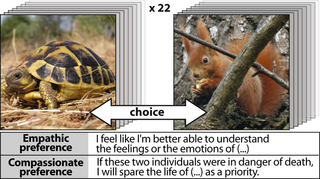
It's important to understand precisely how this research was carried out and the definitions that were used, I quote directly from their essay. To conduct their study, the researchers write, "The notion of empathy is presently referring to the capability to connect with one another at an emotional level1 4,17 . The driven question proposed to the raters to assess their empathic preferences was ' I feel like I’m better able to understand the feelings or the emotions of [choice among a pair of pictures representing different organisms]' . In contrast, the notion of compassion (also termed empathic concern) has been used here to refer to the feeling of concern for the suffering of others, associated with a motivation to help 13,18,19 . The corresponding question proposed to raters was “If these two individuals were in danger of death, I will spare the life of [choice among a pair of pictures] as a priority” (Fig. 1). (My emphases; numbers refer to references in the essay.)

The results of this novel analysis are pretty straightforward (see Figure 2). Concerning empathy, the correlation between empathy scores and the divergence time separating the animals from humans was strongly negative. Likewise, compassion scores were highly correlated with empathy scores and divergence time (see figure 4). However, the correlation with divergence time was lower for compassion scores when compared with empathy scores, with the compassion scores being more related to a person's ethical position on nonhuman animals. They stress , however, that the close relationship between the two scores is important.
What does this all mean? Evolutionary and neurobiological explanations of speciesism
To conclude, the researchers title their discussion "Empathy, resemblance, and relatedness: The anthropomorphic stimuli hypothesis." They write: "Based on our results, we here hypothesize that our ability, real or supposed, to connect emotionally with other organisms would mostly depend on the quantity of external features that can intuitively be perceived as homologous to those of humans. The closer a species is to us phylogenetically, the more we would perceive such signals (and treat them as anthropomorphic stimuli), and the more inclined we would be to adopt a human to human-like empathic attitude toward it." (For a related discussion, see " Anthropomorphism Favors Coexistence, Not Deadly Domination. ")

I look forward to furthering the discussion of this landmark paper and future research on this interesting and important topic. Often, people are hard-pressed to explain why they feel closer to some nonhumans than to others, and this essay opens the door to learning more about these differences. In an increasingly human-dominated world, it's essential to know why humans feel the way they do about the nonhumans with whom we share our magnificent planet. Research in anthrozoology surely will help to provide important and relevant information.
See " The Psychology Behind Why We Love and Exploit Animals " and " Is Eating Dogs Different from Eating Cows and Pigs? "
In their essay the researchers write: "Species exhibiting physical, behavioral or cognitive similarities with humans tend to evoke more positive affect than those without6, and among the different classes of vertebrates, our empathic responses appears to be more important for taxa that are closely related to us 10,11,12." The numbers refer to these papers:
Borgi, M. & Cirulli, F. Attitudes toward Animals among Kindergarten Children: Species Preferences . Anthrozoös 28, 45–59, 2015.
Harrison, M. A. Anthropomorphism, empathy, and perceived communicative ability vary with phylogenetic relatedness to humans . J. Soc. Evol. Cult. Psychol . 4, 34–48, 2010. The researcher concludes, "These data substantiate that the tendency to anthropomorphize varies with a species' genetic relatedness to humans. Further, these data provide evidence for the interconnectedness of empathy and communication and highlight the relationship between these cognitive processes and anthropomorphism. The relationship between anthropomorphism and animal welfare is discussed."
Prguda, A. & Neumann, D. L. Inter-human and animal-directed empathy: A test for evolutionary biases in empathetic responding . Behav. Process. 108, 80–86, 2014.
Bekoff, Marc. Babe, Lettuce, and Tomato: Dead Pig Walking .
_____. "Oh, I know animals suffer, but I love my steak": The self-serving resolution of the "meat paradox."

Marc Bekoff, Ph.D. , is professor emeritus of ecology and evolutionary biology at the University of Colorado, Boulder.
- Find Counselling
- Find Online Therapy
- Asperger's
- Bipolar Disorder
- Chronic Pain
- Eating Disorders
- Passive Aggression
- Personality
- Goal Setting
- Positive Psychology
- Stopping Smoking
- Low Sexual Desire
- Relationships
- Child Development
- Therapy Center NEW
- Diagnosis Dictionary
- Types of Therapy

Understanding what emotional intelligence looks like and the steps needed to improve it could light a path to a more emotionally adept world.
- Emotional Intelligence
- Gaslighting
- Affective Forecasting
- Neuroscience

IMAGES
VIDEO
COMMENTS
Short essay on Kindness to Animals in 400 Words. All living beings on this planet were created and given life by the same divine force. All of us, whether it is human beings, plants or animals, have the right to live and be free. In the olden days, most kings and emperors spent their free time going on hunts to kill animals like deer, tigers ...
Our interactions with animals can impact physical and emotional health, and the following are some of the importance of animal compassion in human lives-. It reduces stress. It diminishes your aggression and increases generosity. It improves mental health by reducing loneliness, depression, and anxiety. It increases your trust, bonding, and ...
Kids must refer to BYJU'S kindness to animals essay because it discusses the benefits of animal-friendly practices and philosophies. Animals need to be protected because they are an important part of our ecosystem. Also, when an animal becomes extinct, this could have a huge impact on the ecosystem. Q2.
By showing compassion towards animals, we can contribute to a more just and equitable world for all creatures great and small. Let us all strive to be kind to animals and to help create a more ...
Kindness to animals also has profound effects on human society. It fosters empathy, compassion, and respect for all life forms, qualities that are fundamental to a more peaceful and inclusive society. Moreover, research has shown that cruelty to animals is often a precursor to violence against humans, indicating that promoting kindness to ...
There is a role for you if you choose to participate in what will become the most important cause of all of humanity's endeavors to date. Know that and trust that. Find your voice. Rise ...
Paragraph on Be Kind to Animals; 250 Words Essay on Be Kind to Animals Introduction. Kindness towards animals is a virtue that is not only ethically upright, but also has profound implications on our own humanity. The way we treat animals is a reflection of our empathy and compassion, two traits that are fundamental to our coexistence.
Figure 2. Empathy and compassion scores attributed to each organisms as a function of divergence time (Mya) between them and humans. The scores correspond to the probability that a given species ...
Towards the end of the chapter called "Animals on Our Plates," you talk about plants and begin to enter into very interesting terrain, suggesting that the sharp binary between plant and animal ...
Cognitive empathy toward animals is a cognitive response to understanding the internal states of animals (Young et al. 2018). Recognizing an animal's emotions, such as joy, sorrow, or anger ...
Search for more papers by this author. Jim Wharton, Jim Wharton. Search for more papers by this author. First published: 23 April 2018. ... between humans and animals daily establishes these organizations as important venues for the exploration of empathy towards animals and its potential impact on promoting pro-environmental behavior. In this ...
A central dimension of human-animal relations involves the degree to which humans feel compassion toward animals. Many people report relatively high levels of compassion toward animals, particularly pets or animals perceived as cute (Piazza et al., Citation 2018; Possidónio et al., Citation 2021).
This perspective on animals inspired me. From volunteering at animal shelters to fundraising for abandoned animals, I've dedicated a majority of my time in order to ensure that animals live under desirable conditions and every single minute has been worthwhile. Thus I want to share my love for animals in this essay.
Many humans feel love and empathy towards animals, but do the animals we care about so deeply feel the same about us? How about each other? ... joy, happiness, shame, rage, compassion, respect and more. Dr. Marc Bekoff, professor and author of numerous essays about animal rights and conservation, stated, "Non-human animals are amazing beings ...
My Passion for Animals. Animals have always held a special place in my heart. From a young age, I have felt a deep connection to them and have been passionate about their well-being and conservation. This passion has guided my academic pursuits and has shaped my future career goals. In this essay, I will delve into the reasons behind my passion ...
Animals in our society are treated as non-living, non-feeling objects, and yet they aren't. They suffer, just as we do. "The greatness of a nation and its moral progress can be judged by the way its animals are treated.". - Gandhi. Some links for further reading: People for the Ethical Treatment of Animals (PETA) Animal Compassion Network.
The Be Kind to Animals (BKA) Contest is an annual event sponsored by the American Humane Association (AHA) to honor young people who make a difference in the lives of animals. Nominees are divided into two age groups (6-9 and 10-13). Winners of the BKA Contest are announced during Be Kind to Animals Week in May.
Having general empathy and compassion towards homeless animals is the minimum we humans can do for them. By educating others, setting a good example, volunteering, and advocating for animal rights, we can help to spread awareness about the issues and make a difference in the lives of street animals. Blog by Nicole McCray.
The simple activities nurture compassion towards animals while providing opportunities for family fun and togetherness. Care for pets. Whether you have a dog, cat, iguana, fish, backyard chickens, or all of the above, the bond that children form with a pet establishes a respect for animals early on. Teaching children about being gentle when ...
Compassion is like a muscle; the more you work it, the stronger it becomes. Here are a few ways simple ways to work that muscle and make the world a better place: 1. Remember that everyone's litter is our litter. It's so easy to walk past an empty packet of whatever discarded on the floor and pretend it's not there, consciously or ...
Animals are equal sharers of natural gifts with men. But it is a pity that men treat animals cruelly. They kill animals to eat their meat. They kill certain other animals to conduct medical experiments. They use animals like donkeys, horses and oxen some animals as beast of burden. They put some animals and birds in a cage for the sake of fun.
30 votes, 48 comments. 675K subscribers in the Buddhism community. A reddit for all kinds of Buddhist teachings
Concerning empathy, the correlation between empathy scores and the divergence time separating the animals from humans was strongly negative. Likewise, compassion scores were highly correlated with ...
Under the exalted vision of the School's... | Instagram. 28 likes, 0 comments - gbnsrsecschool21d on May 1, 2024: ""True compassion is showing kindness towards animals, without expecting anything in return.".